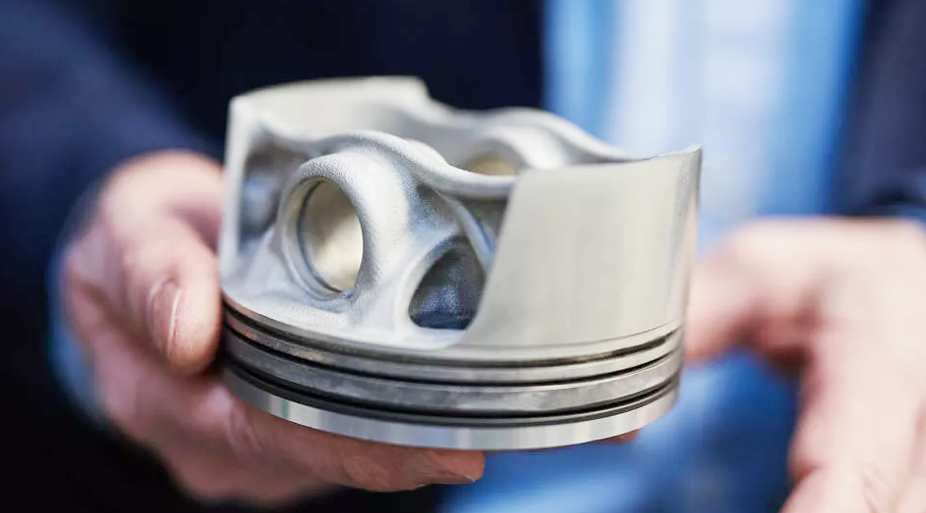Mahle GmBH and Trumpf GmbH + Co. KG have jointly developed a first-ever aluminum piston by the utilization of a 3D printer. Trumpf, an industrial machine manufacturer, and Mahle, a German automotive parts manufacturer, used a laser metal fusion method using a special aluminum alloy. The aluminum alloy was made into particles and then a laser beam melts them and creates a multilayer structure with a specified thickness. The complex surface improved heat loss, therefore improving efficiency.
Challenges Faced by Conventional Methods
In the current testing model, the Porsche 911 GT2 RS, standard forged pistons, has reached its potential limits. This is due to the limitations of using forged or casting methods of production. The 3D printing techniques allow the manufacturing of much more complex surfaces allowing for more efficiency of the piston, allowing a 30HP gain associated with the efficiency.
Using forged or casting methods to increase the rigidity of production lines as only one type of part can be made out of that method, whereas 3D printing provides the flexibility to alter a considerable amount in the design, without the requirement of changing any hardware components.
Strategic Development
- The dynamic economic environment and more demanding customers make automakers look for new ways to catch up with other industries. 3D printing, in many ways, is transforming the potential ways products are designed, developed, and manufactured.
- Design and Inter-Communication of Tools – Smooth, highly detailed, and accurate 3D printed scale models to demonstrate parts or vehicles’ designs and concepts. It also can make rare shapes, i.e., unusual or complex components that could be very difficult to manufacture using conventional methods. The design software is what makes it possible to create nearly any geometric form, such as hollow spaces or honeycombs, that maintains stability while decreasing weight.
- Prototyping Validation – Like the example above, the piston produced as a prototype could be used for testing, but the cost of production of a single piece was considerably low compared to the Forged production method.
- Customized Parts – AM is used by automotive companies to tailor the parts to specific vehicles (making them custom and lightweight). It is especially useful when the cost of such unique parts is justified by a noticeable improvement in the vehicle, like the example above.
- Mass production – 3D printing is the ultimate game-changer for mass production, which means faster production on demand. A massive reduction in waste materials, would, in turn, reduce costs. 3D printing would also give the agility required in the manufacturing line and allow changes in design without any substantial hardware change.
Strategic Advancement
The R&D into piston manufacturing by Mahle is setting the tone of the production techniques in the world. Understanding and improving such production methods will expand alternative drives by supporting suitable components made using 3D printing.
The industry is progressing towards the usage of advanced technology, and the companies keeping up with the trend will benefit as the market in 2019 was valued at $2.38 billion including system, material, and service sales, and by 2030, there is an expectation of market to increase to $45 billion.



